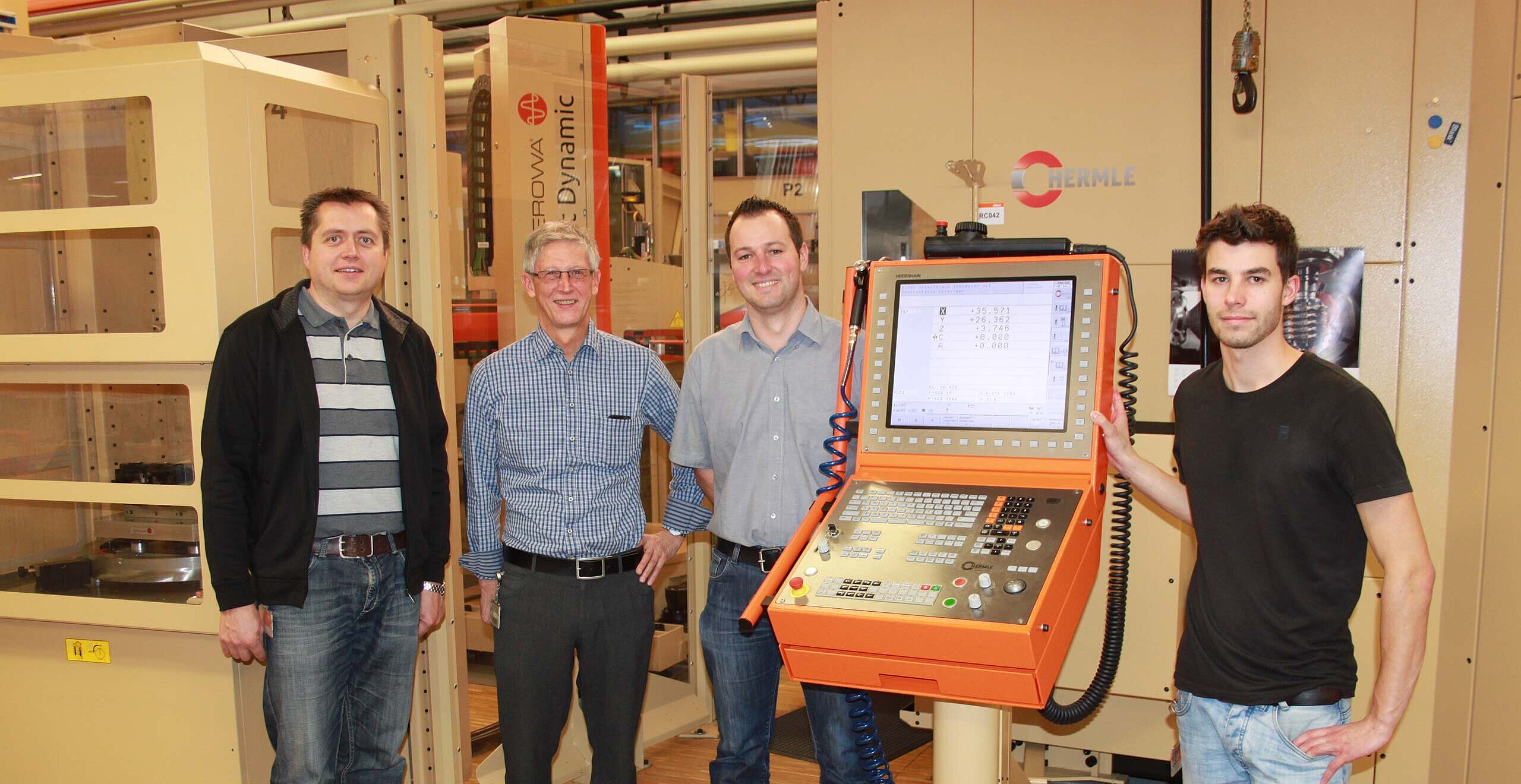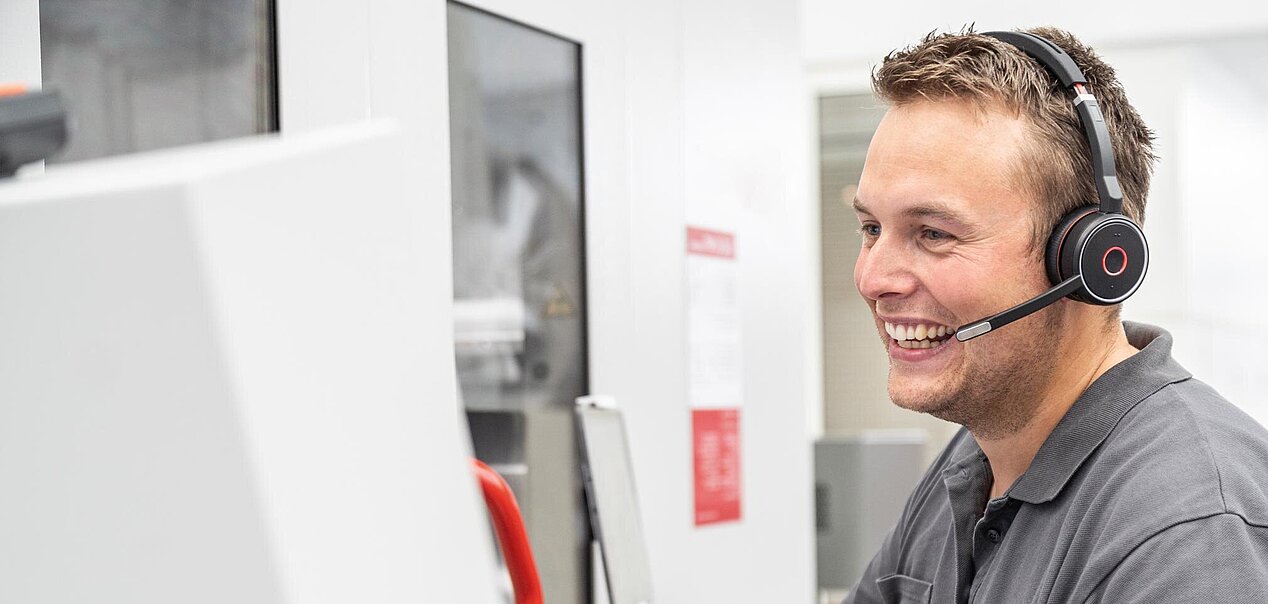Open to successive manufacturing automation
C 32 U | Julius Blum GmbH | Furniture Fittings
Blum is a company with worldwide operations specialising in the manufacture and sale of furniture fittings. The main product groups are lift, hinge and pull-out systems for furniture, primarily in kitchens. Founded in 1952 by Julius Blum, the company is a market leader in the furniture fittings industry today. With just under 6400 employees and annual sales (July 2013 to June 2014) of more than 1.4 billion euros, exports account for 97% of all business. Blum is a fully family-owned company, as it always has been, and is deeply bound to local traditions, producing consistently in seven plants in the Austrian state of Vorarlberg and in additional plants in Poland, USA and Brazil. Supported by 27 subsidiary organisations and representatives, the Blum Group regularly delivers products to customer in over 120 countries around the world. The Vorarlberg location with 7 plants plays a leading role: Company headquarters and administration are based there, as are research and development, design, tool and special machine manufacturing, apprentice training and production. Blum's innovation contributes very fundamentally to the success of the company, as underscored by the fact that Blum has been one of the most diligent patent applicants in Austria over the years, currently holding more than 1200 protected rights. Many of the inventions are considered benchmarks even today, setting standards worldwide for hinge, lift and pull-out systems. To be able to meet the demands of its customers plus the very high delivery and quality standards it has set for itself, Blum relies on a high level of internal manufacturing, including all equipment, tools and special machines required for production.
-

A perspective from the workpiece magazine, located on the left, through the rotating portal handling device which supplies the two machining centres, to the automatically opening and closing cabin door to the working area of the C 32 U machining centre -

The latest flexible manufacturing system for tool making of Julius Blum GmbH, consisting of two C 32 U high-performance CNC 5-axis machining centres with additional tool magazine ZM 87 (the ZM 87 is on the far right, a C 32 U machining centre in the middle and the pallet setup pocket on the left), a workpiece magazine and a rotating portal handling device for workpiece transfer to the two machines
Benchmark-thinking and actions in all areas
Blum's equipment manufacturing could more accurately be called an industrial tool making factory. Several hundred skilled employees and over 250 apprentices produce a large number of prototypes, sample parts, die cast and injection moulding tools, punch tools as well as machine construction parts and spare parts. Skilled employees and technological equipment are divided over 10 departments and additional technologically oriented teams (T teams) to ensure both interdisciplinary and parallel work for on-time deliveries. Gerhard Gorbach, Manager of Equipment Manufacturing in plant 3 of Julius Blum GmbH in Höchst, Austria, explained: "We produce a very wide range of parts. Whenever possible and practical, we use the latest technologies and processes. We approach projects with an evaluation process on three levels. That includes a thorough record of the idea plus a feasibility check and formulation of the project. Next come fundamental decisions for choosing the technology and partner we want to strike out on a new way with. We seek long-term partnerships and see close collaborative work as elemental to ongoing dynamic development in our T teams." This is just what happened over 10 years ago, when a change to a new generation of 5-axis technology was due and Blum's senior management had a more extended goal embodied in two projects, "Organised data traffic" and later "Automated manufacturing in tool making". After thorough tests they chose the 5-axis high-performance CNC machining centres of Maschinenfabrik Berthold Hermle AG, D-78559 Gosheim. The determining factors for the decision were the machine concept, with three axes in the tool and two axes in the workpiece, and also the resulting accuracy (supported by the machine systems), plus the openness of the standard machining centres for automation by networking (including subsequently) with the customer's own workpiece magazine and handling solutions, and last but not least, Hermle's well-known service.
Hermle machining centres: Open to EVERYTHING
The company began with a C 40 U machining centre, followed by another of the same type. The two were then networked together by a workpiece magazine and handling system to form an automated manufacturing system. The "open integration architecture" of Hermle machining centres was an important factor even at this point, as the relevant mechanical, electrical and software interfaces were already available and allowed for system integration later. Helmut Böhler, Department Milling Master in Equipment Manufacturing, plant 3, commented on the strategy of comprehensive manufacturing automation as practised consistently by Blum: "We started many years ago to automate cutting and wire eroding processes and to use standardised workpiece pallets. These experiences naturally influenced the automation of milling tasks, and the pallets were already defined. We were very impressed with the openness of the Hermle machines to integration, and were well aware that Hermle also even has turnkey manufacturing systems including automation in its program, but they were unfortunately not suitable in this case. Aside from that, we make use of what seems appropriate for us and we have no reservations at all regarding integration." Because of this, Hermle again got the nod for the next step in the project mentioned above, "Automated manufacturing in tool making" when there was an urgent need to expand capacity in 5-axis milling. This time the decision was for type C 32 U high-performance CNC 5-axis machining centres from Hermle, and one of them was installed initially. It was soon followed by a second and the two machining centres were then networked together by a tool magazine and pallet handing system to form a flexible manufacturing system. The two machining centres, purchased at different times, were fitted identically for highly productive and flexible complete machining of mould and tool making parts at different levels of complexity (main spindle at 18000 rpm, HSK-A63 tool holding fixture, NC swivelling rotary table 650 mm in diameter, 80 bar ICS system, automatic cabin door, Heidenhain touch probe, Blum tool measurement and breakage control system, etc.). A tool additional magazine ZM 87 for 87 additional workpiece pockets was also added to each machining centre.
Summary
The working area, measuring X = 650, Y = 650, Z = 500 mm, is large relative to the size of the machine and installation area, and sufficient for the two networked C 32 U high-performance CNC 5-axis machining centres to cover a wide range of workpieces including parts for tool making and components as well as machine construction. Just as diverse are the requirements in terms of 5-axis/5-sided/complete/simultaneous machining and workpiece clamping technology as well as workpiece handling. Gerhard Gorbach sums up on a positive note: "We bypass many problems by using the basic pallets we have standardised, adding various clamping devices to them and loading them with workpieces at the setup station. One operator is responsible for each line. The 1st and 2nd shift are manned; night shifts are unmanned. We think of automated parts manufacturing in equipment and tool making as a kind of organised improvisation, because depending on priority demands, we normally manufacture one, or from two to three pieces. We consider 10 pieces already as a series. We are set up very flexibly, yet we make maximum use of machine output and runtimes. Although Hermle "only" filled the order for the machining centres in this project, we received complete support to be able to implement our comprehensive automation concept consistently. We call that working together at eye level, and we're very happy to have a partner like that on board."


